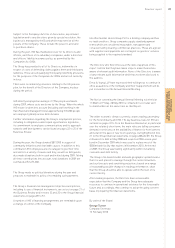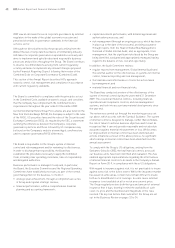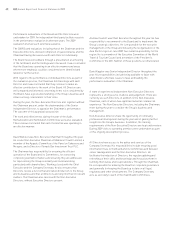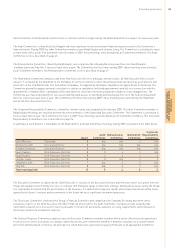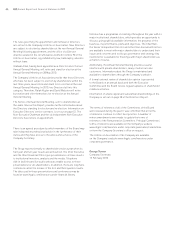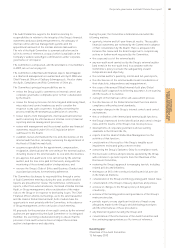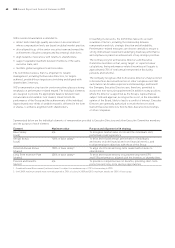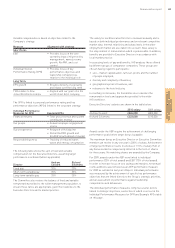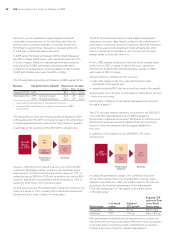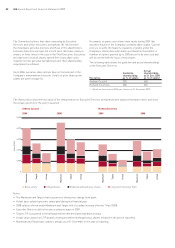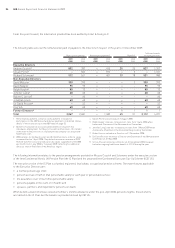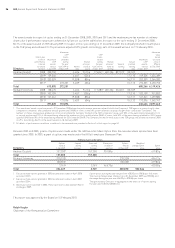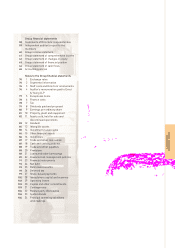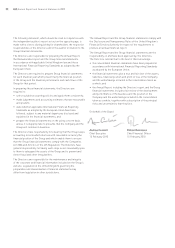Holiday Inn 2009 Annual Report Download - page 51
Download and view the complete annual report
Please find page 51 of the 2009 Holiday Inn annual report below. You can navigate through the pages in the report by either clicking on the pages listed below, or by using the keyword search tool below to find specific information within the annual report.
Remuneration report 49
Variable compensation is based on objectives linked to the
Company’s strategy:
Measure Alignment with strategy
Short Term:
EBIT • Provides focus on the core
operating inputs influenced by
management, namely rooms
growth, RevPAR, and cost
control
Individual Overall • Provides focus on key
Performance Rating (OPR) performance objectives and
leadership competencies
relative to the individual role
Long Term:
EPS growth • Ensures delivery of a growing
profit base over the long term
TSR relative to Dow • Aligned with our goal to be the
Jones World Hotels index world’s best hotel company
The OPR is linked to personal performance rating and key
performance objectives (KPOs) linked to the corporate strategy:
Individual Performance
Measures for OPR Example KPOs
Financial returns • Total gross revenue and system
contribution revenue
Our people • Annual employee engagement
scores
Guest experience • Relaunch of Holiday Inn
• Global RevPAR growth and
RevPAR growth ahead of market
Responsible business • Tracking of reduced water,
waste and energy consumption
The following table shows the split of fixed and variable
compensation for the Executive Directors, assuming target
performance is achieved (where applicable):
Andrew Richard
Director Cosslett Solomons
Fixed pay 30% 30%
Short-term variable pay 35% 35%
Long-term variable pay 35% 35%
The Committee also reviews the balance of fixed and variable
remuneration provided to the wider management population, to
ensure these ratios are appropriate, given the relativities to the
Executive Directors and to market practice.
3 Base salary and benefits
The salary for each Executive Director is reviewed annually and is
based on both individual performance and on relevant competitive
market data. Internal relativities and salary levels in the wider
employment market are also taken into account. Base salary is
the only element of remuneration which is pensionable. In addition,
benefits are provided to Executive Directors in accordance with
local market practice.
In assessing levels of pay and benefits, IHG analyses those offered
by different groups of comparator companies. These groups are
chosen having regard to participants’:
• size – market capitalisation, turnover, profits and the number
of people employed;
• diversity and complexity of business;
• geographical spread of business; and
• relevance to the hotel industry.
In reaching its decisions, the Committee also considers the
remuneration levels and approaches provided to the wider
IHG workforce.
Executive Directors’ salaries are shown in the table below:
2010 salary 2009 salary
Andrew Cosslett £826,000 £802,000
Richard Solomons £523,000 £510,000
4 Annual Bonus Plan (ABP)
Structure in 2009
Awards under the ABP require the achievement of challenging
performance goals before target bonus is payable.
The maximum bonus an Executive Director or Executive Committee
member can receive in any one year is 200% of salary. Achievement
of target performance results in a bonus of 115% of salary. Half of
any bonus earned is compulsorily deferred in the form of shares
for three years. No matching shares are awarded by the Company.
For 2009, awards under the ABP were linked to individual
performance (30% of total award) and EBIT (70% of total award).
In order to increase focus on cost savings and margins, net annual
rooms additions was removed as an ABP performance measure
for 2009 as outlined in last year’s Report. Individual performance
was measured by the achievement of specific key performance
objectives that are linked directly to the Group’s strategic priorities,
and an assessment of performance against leadership
competencies and behaviours.
The individual performance measures comprise several factors
linked to strategic objectives, a selection of which is set out in the
Individual Performance Measures for OPR and Example KPOs table
on this page.
THE BOARD,
SENIOR MANAGEMENT AND
THEIR RESPONSIBILITIES


